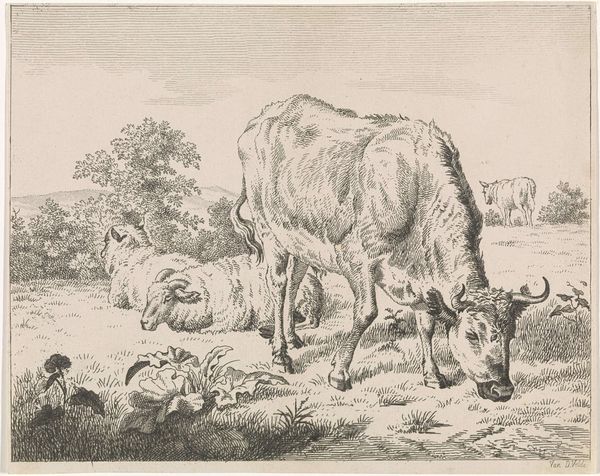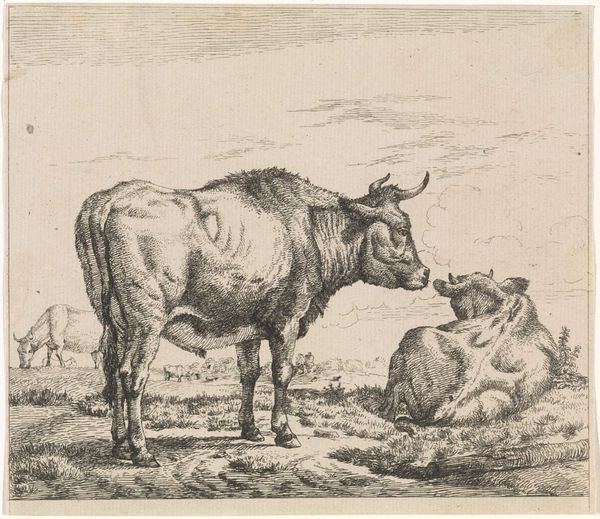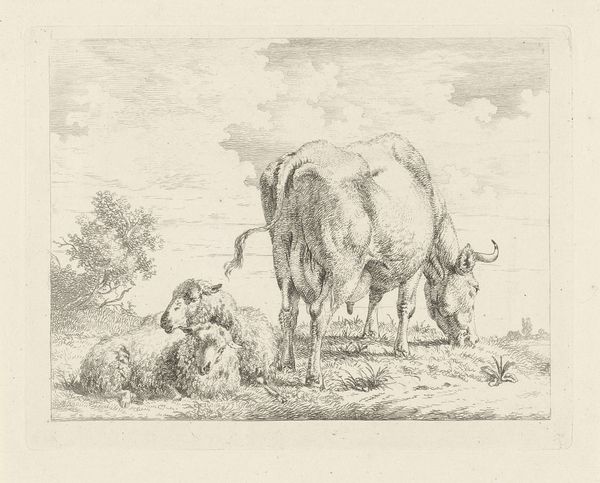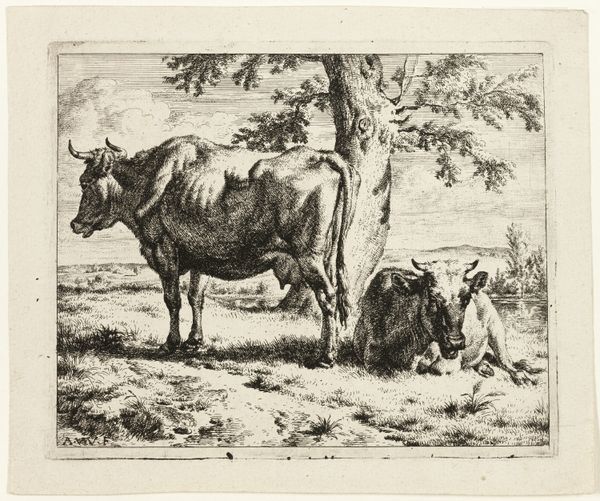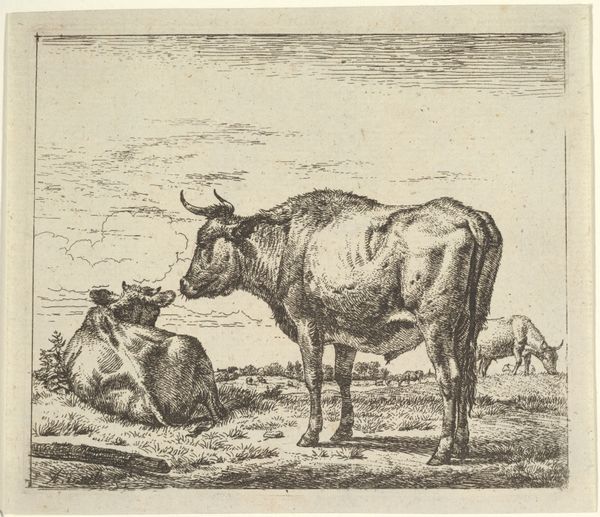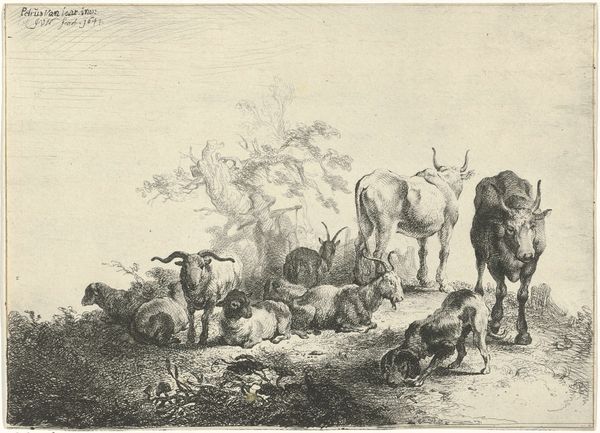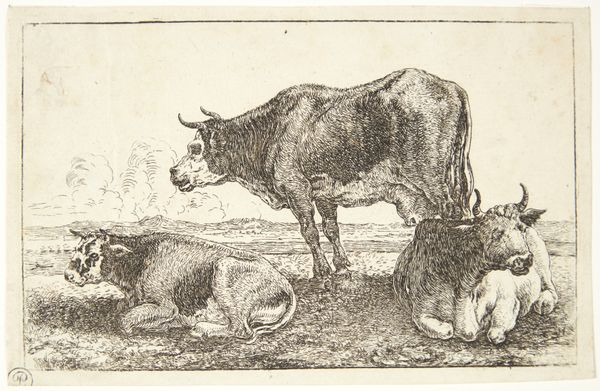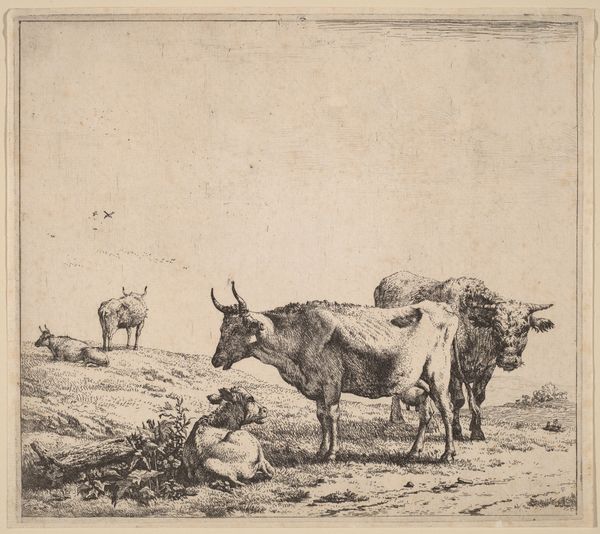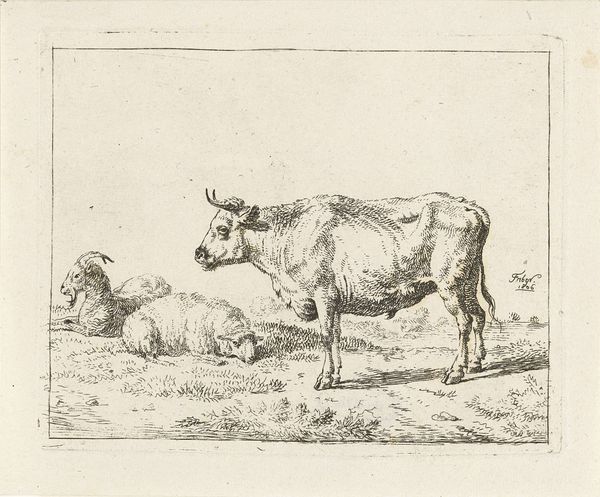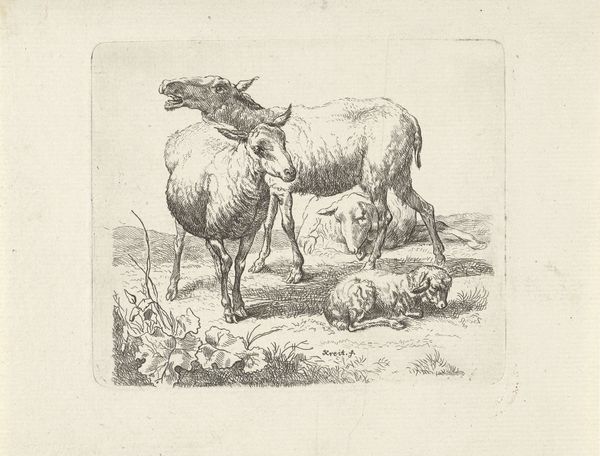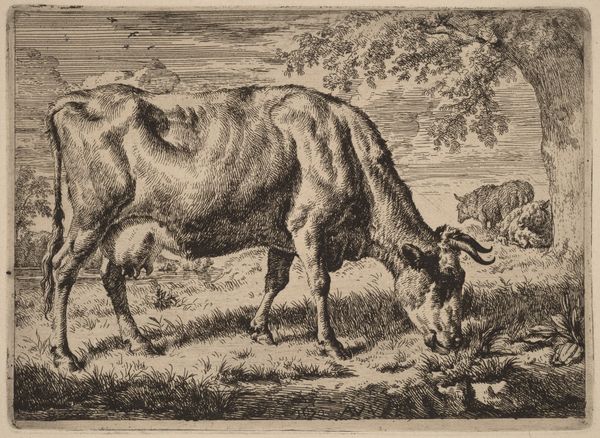
drawing, print, etching, paper
#
drawing
#
baroque
#
dutch-golden-age
# print
#
etching
#
landscape
#
paper
#
pencil drawing
#
genre-painting
#
realism
Dimensions: 134 × 164 mm
Copyright: Public Domain
Curator: Welcome. We are standing before "A Cow and Three Sheep" by Adriaen van de Velde, created using etching, a type of printmaking. Editor: My first thought is how remarkably textured it is for an etching. You can almost feel the weight of the cow, the coarseness of its hair. The details really pull you in. Curator: Van de Velde excelled at rendering landscapes and animals with sensitivity. This work reflects a rising interest in genre painting within Dutch Golden Age art, elevating scenes of everyday life. We have to consider the sociopolitical implications: Land, livestock, labor—these were all key components of the burgeoning Dutch economy. Editor: Absolutely, but look at the compositional choices, too. The cow dominates the foreground, pushing the landscape and sheep into a supporting role. It seems Van de Velde directs our eye not just toward pastoral life but to a careful assessment of figure versus ground. Curator: It's more than just about artistic choices, though. By choosing these subjects, he engages with complex power dynamics. Remember, the Dutch Republic saw massive wealth accumulation partially through colonial exploitation. Editor: Perhaps. Still, I think the linear quality achieves something aesthetically intriguing, separate from social criticism. Note the contrast between the heavy contouring of the animals, contrasted with the open landscape. Curator: The simplicity can be deceiving, though. How might it have been received in its time? And what statement is Van de Velde making by centering the laboring animals of the period? Who owned the pastures? Who benefited from their output? The image, as such, reflects a society deeply stratified. Editor: An intriguing perspective. I see more value in the way the line functions on the paper; nevertheless, you encourage consideration of important contextual elements. Curator: Precisely. We need both perspectives to understand the art and the moment it reflects. Editor: And I would say that considering these various factors helps make one realize just how enduring is its artistic merit.
Comments
No comments
Be the first to comment and join the conversation on the ultimate creative platform.
